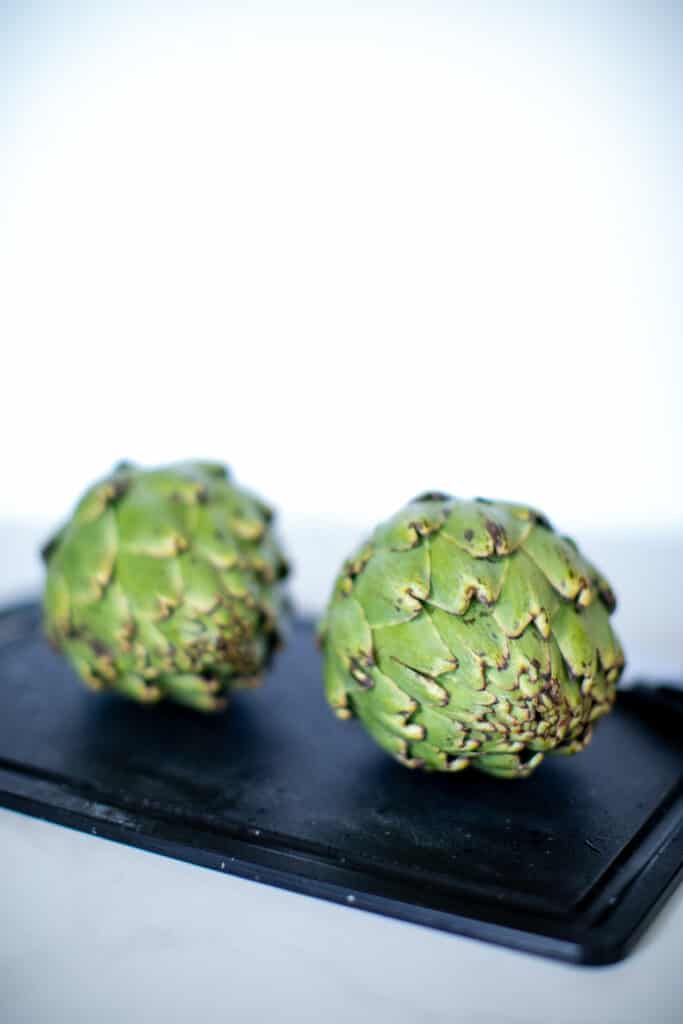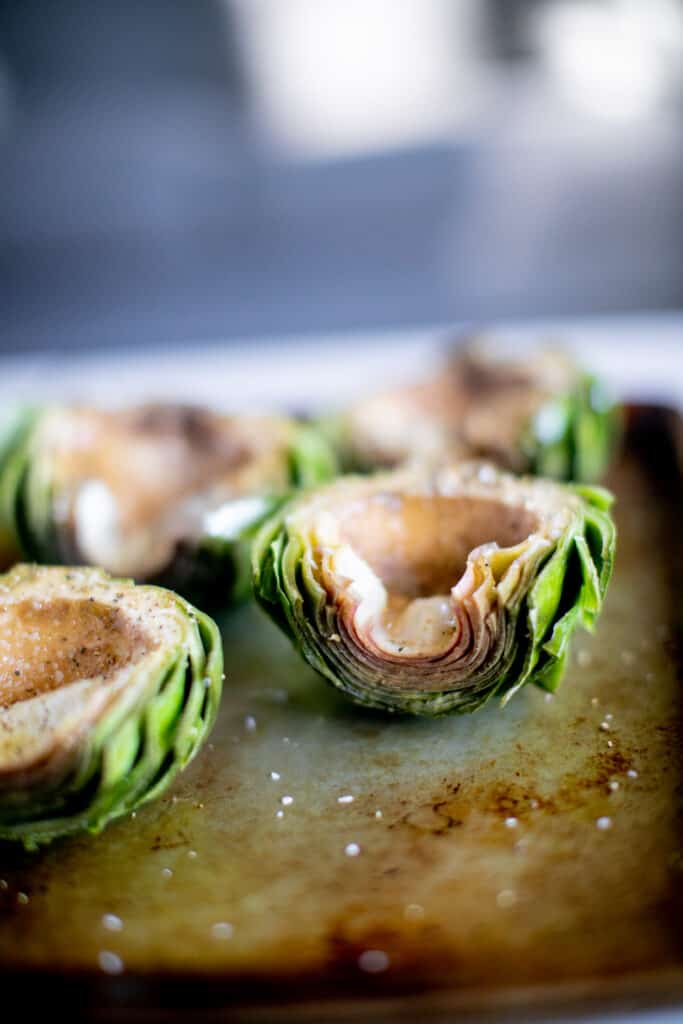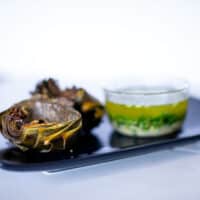As an Amazon Associate we earn from qualifying purchases.
Roasted artichokes are a special treat around my house. Artichokes can be intimidating with their spines and inedible parts, and for the longest time, I avoided them. While they are a little tricky to prepare, with some simple instructions they can be turned into a delicious and sophisticated appetizer.
Quick Navigation
What is a Roasted Artichoke?
Roasted artichokes are a common appetizer of seasoned artichokes cooked with dry heat in the oven. Roasted artichokes are often served with an emulsion based dip such as mayonnaise or aioli.

My Approach to Roasted Artichokes
Preparing an artichoke is plenty of work. So when I developed this roasted artichoke recipe, I wanted to keep it really simple.
What Makes a Good Roasted Artichoke
The best roasted artichokes have soft well seasoned flesh and maintain their green color. If the color drains out and the artichoke is grey then it is likely overcooked.
The Challenge with Roasted Artichoke
The biggest challenge with roasted artichoke is the prep work. Removing the spines can be pretty tedious to do, especially if you do not have kitchen shears or a good pair of scissors. Additionally, many artichoke novices may not realize the core (choke) must also be removed. Artichokes are VERY fibrous plants and the core and old leaves are basically inedible.
My Solution to Artichoke Prep Work
Be methodical and follow these instructions to prep your artichoke:

- Cut the top 1 inch of the artichoke off with a knife.
- Next remove any small underdeveloped leaves by hand.
- Next remove the bottom two rows of leaves by pulling down on them (towards the stock).
- Next clip the spines on the remaining leaves.
- Cut the artichoke in half from stem to point.
- Now you will be able to see the choke, remove it with a spoon.
- Finally, any of the small internal leaves that are purple or turning purple at the points you can remove (these are going to taste like paper).
Developing Flavors
I specifically chose to roast my artichoke rather than steam it (the conventional way) so I could develop more flavor. When it comes to developing flavor with my artichoke it is really important to let it brown and crisp up before covering. This will give a wider variation in texture and taste as sugars caramelize and the oil crisp up the meat.
What Pairs with Roasted Artichoke?
The most common pairings for roasted artichoke are mayonnaise and garlic aioli. Both are emulsified dips and thus add richness and body to the artichoke. I recommend garlic lemon butter with these roasted artichokes. The lemon will pair very nicely with the olive oil and the butter will add plenty of richness and body.

Tools Required
The big thing for artichoke is to have a good pair of kitchen shears. It is possible to trim an artichoke completely with a knife but it isn’t easy and won’t look as nice. To remove the core (choke) you will want a sturdy metal spoon.

Ingredients
- Two artichokes
- 1 lemon wedge
- 2 tablespoons olive oil
- Salt and pepper to taste
Instructions
- Preheat your oven for 475°F
- Prep your artichoke by removing the spines, old leaves, choke (middle), and any purple flowering leaves
- Oil and season your artichoke halves with the lemon, olive oil, salt and pepper
- Brown for 10 minutes at 475°F
- Flip over and cover tray tightly with foil
- Cover and cook for 30 minutes
- Serve
